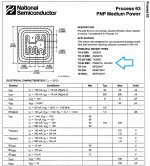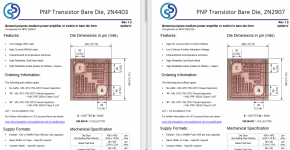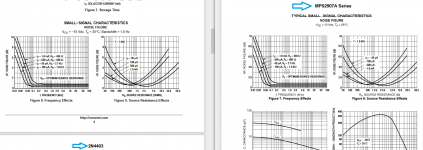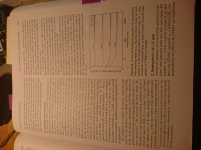LIGO Confusion
It's an interesting article and good research.
My problem is trying to read the graphs, even when magnified.
Colors should have been further divided
using .........
or - - - - -
& - . - . - . - . etc.
At least that would separate the higher cost resistors
from the lower cost resistors and we could better see
which gives best cost:quiet ratio.
Issues I continue to have with it follow.
Figure 6: Be my guest.
Figure 7: Yel is good.
lt grn: good.
dk blue/gray: good
royal blue good.
org & brown: mediumgood.
Figure 8: Red looks good, but which lt. blue?
royal blues looks good, but which of the 3 oranges?
Figure 9: Doesn't count, too easy.
Figure 10: Which resistor?
lt grn: Yageo RC1206 or Vishaly Dale CMF55?
dk grn: Mira 0805 or Roederstein SMM0204-MS1?
Yel: Looks Good.
Pink: Yageo MF0207 or Welwyn RC55Y look good.
Figure 11: Which Resistor?
lt Blu: Yageo RC0805 or Vishay MMS0204? Wrong one is noisy.
org: MIRA 0805 or Susumu RG-Series?
It's an interesting article and good research.
My problem is trying to read the graphs, even when magnified.
Colors should have been further divided
using .........
or - - - - -
& - . - . - . - . etc.
At least that would separate the higher cost resistors
from the lower cost resistors and we could better see
which gives best cost:quiet ratio.
Issues I continue to have with it follow.
Figure 6: Be my guest.
Figure 7: Yel is good.
lt grn: good.
dk blue/gray: good
royal blue good.
org & brown: mediumgood.
Figure 8: Red looks good, but which lt. blue?
royal blues looks good, but which of the 3 oranges?
Figure 9: Doesn't count, too easy.
Figure 10: Which resistor?
lt grn: Yageo RC1206 or Vishaly Dale CMF55?
dk grn: Mira 0805 or Roederstein SMM0204-MS1?
Yel: Looks Good.
Pink: Yageo MF0207 or Welwyn RC55Y look good.
Figure 11: Which Resistor?
lt Blu: Yageo RC0805 or Vishay MMS0204? Wrong one is noisy.
org: MIRA 0805 or Susumu RG-Series?
It's an interesting article and good research.
My problem is trying to read the graphs, even when magnified.
I printed it, viewed in large size to see the color, made notes. After that it was easy because the bad resistors are grouped already. When resistance is 1k (and above), none of the 100ppm is good enough.
They also use thick and thin lines, but that does not help much.
At least 2 of the better ones seem to be easily sourced:
< Durchkontaktierbare Widerstande | Widerstande | DigiKey >
< LTW964TPW06030DB00 Vishay Dale | Kits | DigiKey >
At least 2 of the better ones seem to be easily sourced:
< Durchkontaktierbare Widerstande | Widerstande | DigiKey >
< LTW964TPW06030DB00 Vishay Dale | Kits | DigiKey >
Last edited:
The real part of the series representation of the source impedance gives the equivalent source noise voltage. The real part of the parallel representation of the source impedance gives the equivalent noise source current.When one is determining the total noise of a preamp circuit, which is proper to use----the source IMPEDANCE or the source RESISTANCE?
And the magnitude of the source impedance times the input current noise gives the equivalent voltage noise due to that current noise.
Usually all noise sources are converted to equivalent input voltage noise values and then rms-summed (ie combined as powers, not voltages) as they are independent (uncorrelated).
1) amp input voltage noise
2) Source Johnson voltage noise
3) amp input current noise times input impedance (this one is all too often forgotten about, yet it can dominate).
The above is all as spectral densities, V per sqrt(Hz), so you have to multiply by the sqrt(bandwidth) to get rms voltage at the end.
Usually all noise sources are converted to equivalent input voltage noise values and then rms-summed (ie combined as powers, not voltages) as they are independent (uncorrelated).
1) amp input voltage noise
2) Source Johnson voltage noise
3) amp input current noise times input impedance (this one is all too often forgotten about, yet it can dominate).
The above is all as spectral densities, V per sqrt(Hz), so you have to multiply by the sqrt(bandwidth) to get rms voltage at the end.
Yes, thanks for your help. I came up with this formula for my spreadsheet for calculating Signal-to-Noise ratio :
=(-20*LOG10((signal level/((((SQRT(POWER(voltage noise in nV√Hz,2)+POWER(current noise in pA√Hz*source impedance in KΩ),2)+POWER(SQRT((1.6284*POWER(10,-2))*(source resistance in KΩ*(POWER(10,3)))),2)))*SQRT(19980)))*1/1000000))))
This is at 22°C room temperature in a bandwidth of 20-20,000Hz.
It seems to work well.
=(-20*LOG10((signal level/((((SQRT(POWER(voltage noise in nV√Hz,2)+POWER(current noise in pA√Hz*source impedance in KΩ),2)+POWER(SQRT((1.6284*POWER(10,-2))*(source resistance in KΩ*(POWER(10,3)))),2)))*SQRT(19980)))*1/1000000))))
This is at 22°C room temperature in a bandwidth of 20-20,000Hz.
It seems to work well.
Last edited:
Lowest-noise/best transistors for a microphone preamp I have found, using the data from Horowitz/Hill were the Zetex 550/450s.
I am building a measurement LNA and it calls for (parallel) 2N4403 (which I have on order) but I had the question if there was another part number made in that same process or perhaps even the same die with different packaging or finishing.
I think the 2N2907 die is (was) originally from the same National Process #63 as the 2N4403. (See attached.)
I also believe that some suppliers of bare die supply identical looking die for 2N4403 and 2N2907.
Also I believe that the ON Semi datasheets show the exact same noise graphs (see attached).
So can anyone confirm that these are the same die made in the same process? The differences being only in finishing, packaging and test?
This might be useful to someone else who needs to quickly assemble an LNA that calls for the 2N4403 but only has XX2907 types in stock.
I think the 2N2907 die is (was) originally from the same National Process #63 as the 2N4403. (See attached.)
I also believe that some suppliers of bare die supply identical looking die for 2N4403 and 2N2907.
Also I believe that the ON Semi datasheets show the exact same noise graphs (see attached).
So can anyone confirm that these are the same die made in the same process? The differences being only in finishing, packaging and test?
This might be useful to someone else who needs to quickly assemble an LNA that calls for the 2N4403 but only has XX2907 types in stock.
Attachments
Lowest noise BJT should be taken with a pinch of salt.
There is no noticeable result difference within a bunch of extremely low noise transistors. Instead of the lowest, it makes more sense to consider the lowest dozen.
Then other considerations in those matter.
Matching and Gain for low Vos and Ibias. ( May be Early voltage ) Cost and availability.
There is no noticeable result difference within a bunch of extremely low noise transistors. Instead of the lowest, it makes more sense to consider the lowest dozen.
Then other considerations in those matter.
Matching and Gain for low Vos and Ibias. ( May be Early voltage ) Cost and availability.
I am building a measurement LNA and it calls for (parallel) 2N4403 (which I have on order) but I had the question if there was another part number made in that same process or perhaps even the same die with different packaging or finishing.
I think the 2N2907 die is (was) originally from the same National Process #63 as the 2N4403. (See attached.)
I also believe that some suppliers of bare die supply identical looking die for 2N4403 and 2N2907.
Also I believe that the ON Semi datasheets show the exact same noise graphs (see attached).
So can anyone confirm that these are the same die made in the same process? The differences being only in finishing, packaging and test?
This might be useful to someone else who needs to quickly assemble an LNA that calls for the 2N4403 but only has XX2907 types in stock.
Onsemi has made the 2n4403 with the noise curves obsolete, and tellingly, the replacement no longer has any reference to noise figures.
So I would be skeptical as to the new 4403 noise figure. Diodes inc also do not quote NF.
The old 2n4403 made it in to a few mic amps, 2-3 in parallel.
I have the 60 dB LNA working well with three parallel 2N2907 (very old stock that I bought 20+ years ago).
I was wondering if could use this LNA to compare the noise of various currently made generic and clone transistors. Can anyone suggest a reasonable test circuit to place the DUT/device under test into?
Otherwise perhaps I could try comparing various PNP simply by replacing the three parallel 2N2907 in the LNA with the device under test?
Does anyone have a schematic of the noise test circuit used for transistors like 2N2907 and 2N4403?
I was wondering if could use this LNA to compare the noise of various currently made generic and clone transistors. Can anyone suggest a reasonable test circuit to place the DUT/device under test into?
Otherwise perhaps I could try comparing various PNP simply by replacing the three parallel 2N2907 in the LNA with the device under test?
Does anyone have a schematic of the noise test circuit used for transistors like 2N2907 and 2N4403?
- Home
- Design & Build
- Parts
- Lowest noise BJT transistor?



